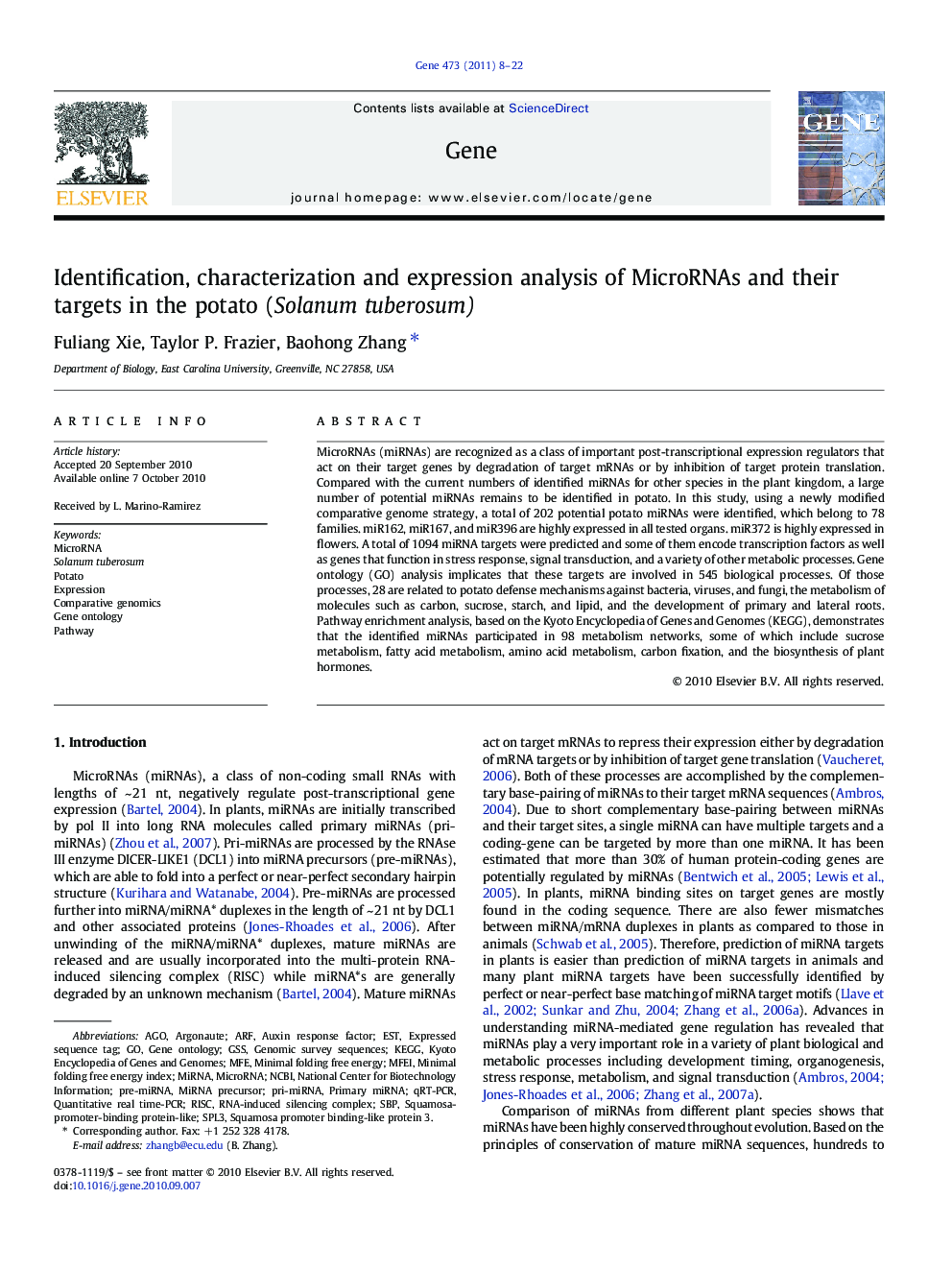| Article ID | Journal | Published Year | Pages | File Type |
|---|---|---|---|---|
| 2818462 | Gene | 2011 | 15 Pages |
MicroRNAs (miRNAs) are recognized as a class of important post-transcriptional expression regulators that act on their target genes by degradation of target mRNAs or by inhibition of target protein translation. Compared with the current numbers of identified miRNAs for other species in the plant kingdom, a large number of potential miRNAs remains to be identified in potato. In this study, using a newly modified comparative genome strategy, a total of 202 potential potato miRNAs were identified, which belong to 78 families. miR162, miR167, and miR396 are highly expressed in all tested organs. miR372 is highly expressed in flowers. A total of 1094 miRNA targets were predicted and some of them encode transcription factors as well as genes that function in stress response, signal transduction, and a variety of other metabolic processes. Gene ontology (GO) analysis implicates that these targets are involved in 545 biological processes. Of those processes, 28 are related to potato defense mechanisms against bacteria, viruses, and fungi, the metabolism of molecules such as carbon, sucrose, starch, and lipid, and the development of primary and lateral roots. Pathway enrichment analysis, based on the Kyoto Encyclopedia of Genes and Genomes (KEGG), demonstrates that the identified miRNAs participated in 98 metabolism networks, some of which include sucrose metabolism, fatty acid metabolism, amino acid metabolism, carbon fixation, and the biosynthesis of plant hormones.
